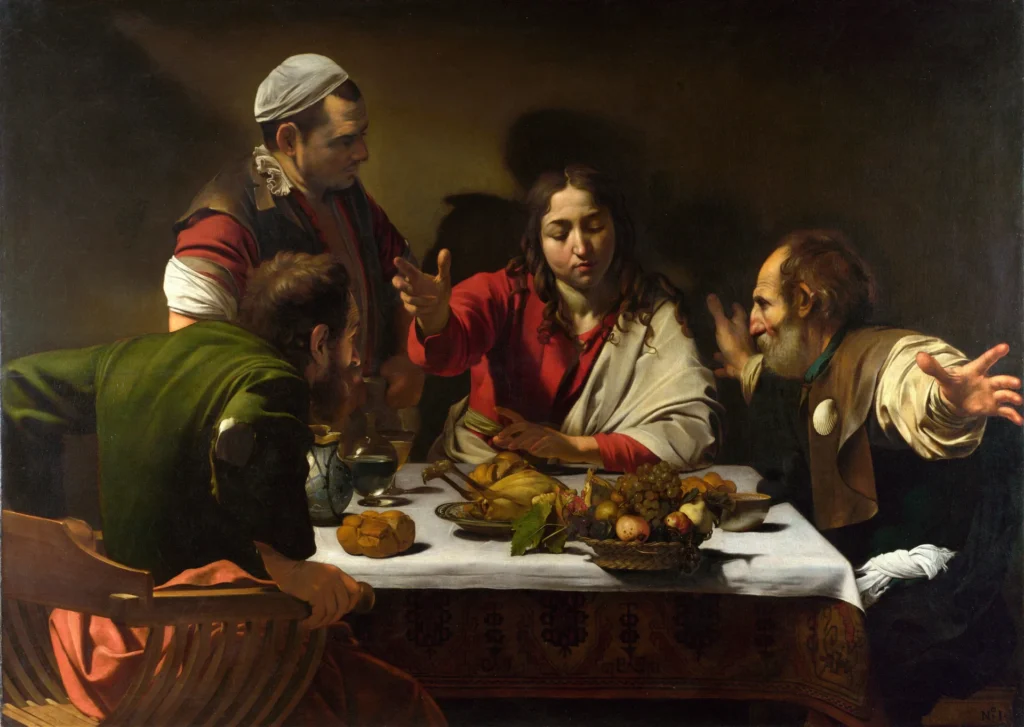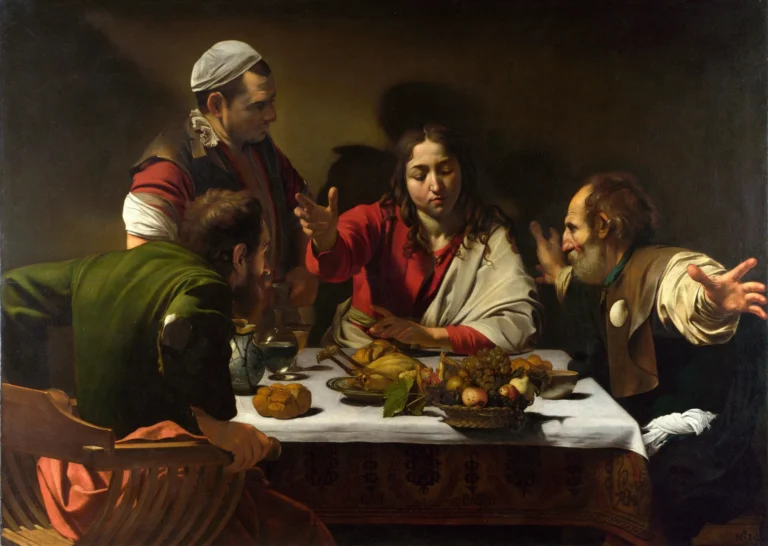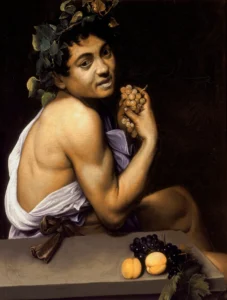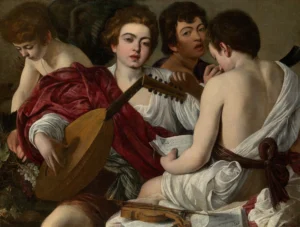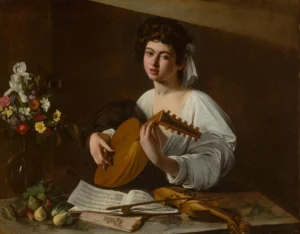Supper at Emmaus (ca 1601)
Painted in 1601 by Caravaggio, Supper at Emmaus captures the pivotal moment from the Gospel of Luke where Jesus reveals himself to his disciples after the resurrection. The artwork features dramatic use of light and shadow, pulling viewers into the moment while emphasizing the emotional reactions of the figures. The realism and symbolism present in this piece exemplify Caravaggio's innovative style, greatly influencing future generations of artists and leaving a lasting impact on the representation of biblical narratives.
Year 1601
About the Artwork
Did You Know
Liked what you see? Add it to your collection.
Enjoyed reading? Share it.
... continued
Artist and Date
The painting was created by Michelangelo Merisi da Caravaggio in approximately 1601.
Medium and Dimensions
It is an oil on canvas painting, measuring 141 cm × 196.2 cm (56 in × 77.2 in).
Location
The painting is housed at the National Gallery in London, with the accession number NG172.
Subject Matter
The painting depicts a scene from the Gospel of Luke (Luke 24:30-31), where the resurrected Jesus reveals himself to two of his disciples, Cleopas and Luke, in the town of Emmaus. The moment captured is when Jesus breaks the bread, and his true identity is revealed to the disciples before he vanishes from their sight.
Composition and Style
- The painting features life-sized figures, which creates a sense of immediacy and proximity for the viewer.
- It is characterized by Caravaggio's use of dramatic lighting, known as chiaroscuro, where strong contrasts between light and dark emphasize the emotional and narrative aspects of the scene. The faces of Jesus and the disciples are illuminated, while the innkeeper remains in shadow, symbolizing his lack of understanding or belief.
- The composition is carefully planned, with the figures arranged to draw the viewer's eye towards Jesus. The outstretched arms of the disciples and Jesus's hand breaking the bread invite the viewer into the scene.
Symbolism
- The painting includes several symbolic elements, such as the basket of fruit that casts a fish-shaped shadow on the tablecloth, referencing the early Christian symbol of the fish (ichthys) for Christ.
- The empty space at the table is often interpreted as an invitation for the viewer to join the meal, further engaging the audience with the scene.
Historical Context
The painting was commissioned and paid for by Ciriaco Mattei, brother of Cardinal Girolamo Mattei. It is one of two versions of "The Supper at Emmaus" painted by Caravaggio; the other version, created in 1606, is located in the Brera in Milan. The later version has more restrained gestures, reflecting possible changes in Caravaggio's style and personal circumstances.
Artistic Techniques
Caravaggio employed the Trompe-l'œil style in both versions of the painting, creating a sense of movement and immediacy through the gestures of the figures. The use of light and shadow is a hallmark of Caravaggio's work, serving both to create a realistic effect and to enhance the narrative and emotional impact of the scene.




